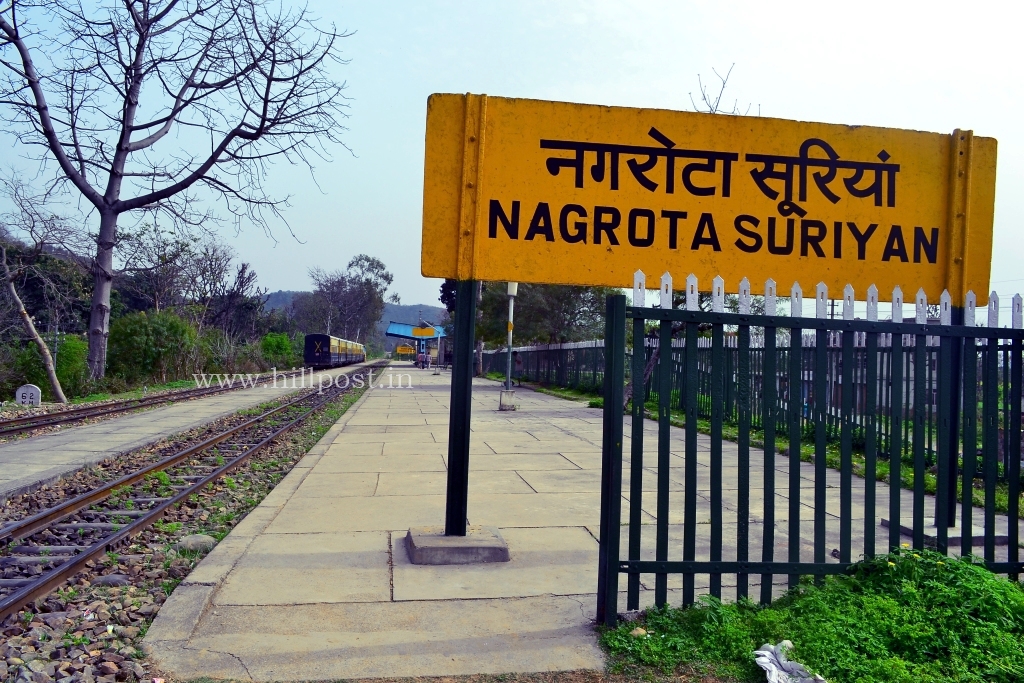British rulers had unveiled a technical revolution in bulk transport system during eighteenth century with the invention of Railways which was soon rolled out in India primarily to meet their strategic and commercial motives.
To enforce their will on a land as vast as the Indian sub-continent the colonial rulers required a swift mode of military movement to stifle the rebellious sentiment ignited by first war of independence in 1857.
However, unlike the recent demographic hegemony over rail expansion, the imperial bosses never discriminated on the basis of topography and geography while rolling out five compact and sustainable mountain railway systems along with vast network in densely populated plain as well as plateau regions of country.
As the longest among these five hilly tracks, the Kangra Valley Railway popularly known as KVR is still operational with the rolling stock of heritage obsolescence.
KVR remains an engineering marvel even in this robotic era because no post independence rail project could achieve an altitude elevation of 800.340 meters within a length span of 163 kilometers.
Despite displaying the imperial genius, the serpentine narrow guage labyrinth of steel rails nailed with timber planks, also stands as a testimony to Indian technological inefficiency because the track itself has not travelled further even an inch after 1947.
As a consequence of being the youngest among five mountain railways of British India, KVR emerged as a successful technological cocktail because engineers employed the zig-zag spirals of Darjeeling toy train route, rack and pinion technique of Nilgiri mountain track, floating axels of Matheran hill railway and aqueduct as well as tunneling style of Kalka-Shimla tourist circuit.
The groundwork for laying the track from Pathankot to Jogindernagar commenced in 1925 and the freight traffic rolled out in just three years for Uhl hydro-electric project at Jogindernagar. Subsequently, passenger services began in April 1929.
KVR gently pierces into entire Kangra valley with lower section from Pathankot to Kangra town in smooth gradient while upper portion in Mandi district of Himachal is marked by sudden ascent and sharp curves.
Besides, technological heritage, the operational originality of Kangra railway remains intact as the traffic on this neglected section is still managed with primitive signaling system and halt stations of colonial architecture.
However, the antiquity of this surviving narrow gauge train corridor has become a convenient roadblock in its expansion and modernization because Indian Railway establishment is infected with a strange fad of getting KVR converted into a heritage railway so that its scope for its up gradation, expansion and strengthening is sealed forever.
Although, it traverses a majestic and scenic terrain but unlike its other cousins, the utility of KVR is much beyond the ornamental tourism value as the industrial and economic prosperity of Kangra valley as well as strategic depth against China depends vitally on its expansion and conversion.
Kangra railway tolerated apathy and neglect in all the railway budgets of free India but so strong is its passenger footprint that even an entire Himachal Roadways fleet stationed inform of HRTC depot at Pathankot could never diminish its passenger volume despite a huge time lag of seven hours between train journey and bus travel from Pathankot in Punjab to Jogindernagar in Himachal.
A substantial portion of military personnel travel by Kangra Valley Railway to their native places in Himachal during the vacations. In this era of localized border flare ups and precision warfare, the military importance of Kangra Railway can be underestimated at our own peril only as the track has the potential to link Leh via Manali.
The award of heritage status to Kangra Railway will thwart its chances of expansion forever because of “preservation” constraints.
Railway ministry has been liberated from clutches of coalition politics after two decades and on the eve of latest Railway budget, hitherto the politically “insignificant” folks of Himachal have a ray of hope that some concrete measures will be initiated to modernize and upgrade this colonial railway legacy so that Chinese rail-head at Lhasa can be effectively stared from Leh by Indians and the local populace of Himachal are also active partners in the Indian industrial success story.




What soever described is a past but it is a fact that railway acted partisan sofar himachal is concerned. What, every Himachali wants is extension and Railway should act.